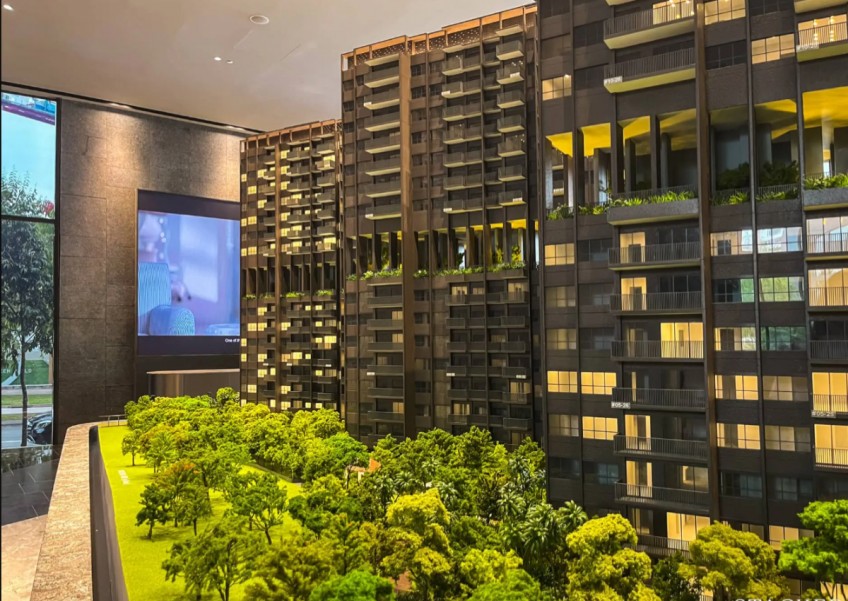Here's why some new-launch condos sell better than others

News reports have a whole host of reasons why Lentor Mansion managed to sell 75 per cent of its units, despite slower sales of projects like The Arcady at Boon Keng or Hillhaven (both sold about a third of their units).
Now we in the industry have a hardwired response to this sort of thing: and that's to give you long-winded explanations on price, location, layout, etc.
But there is also an underrated reason, and I think it boils down to something simpler: show of hands all, who here has heard of Lentor Mansion? And who has heard of The Arcady or Hillhaven?
Okay so I can't actually see you, but I'm betting the majority have seen some kind of Lentor Mansion advertisement and know what it is, whilst the other two may as well be exotic European handbag brands or something.
And this may come down to an issue of size: Lentor Mansion is the bigger project here, and gets more marketing.
To be clear, I'm not saying that's the only reason a bigger project (by unit count at least) fares better — there are other factors like more land space, more facilities, generally lower maintenance costs, etc. But besides that, a large project is going to get more aggressive marketing from the developer.
Not only can the developer not afford to fail, there's the simple fact that there are more units to move. Regardless of whether there are 20 units or 1,000+ units, developers are working on the same five-year time limit (although their ABSD rule has somewhat relaxed).
So with a bigger resulting budget, developers of bigger condos are bound to spend more on print/bus ads, buy more online ads, invite more press visits, invest in a better showroom, etc.
They have the scale to really push the awareness of the project, and that in turn makes it easier for the property agents to push to their clients as well. It's much easier when the prospect has heard of the development in some form, as compared to one that needs a completely new introduction.
Contrast that to smaller, or boutique condos: when there are 50 or fewer units, developers tend to leave it more to property agents.
They leave it to realtors' blogs, personal networks, fake "official" websites, and roadshows. And if sales aren't happening, it's grumbling about the agents' being subpar.
The thing is, realtors act as individuals first and foremost — and when you do that, it's like one of those amateur tug-of-war teams where no one is all pulling at the same time. Some of them may not even be pulling in the same direction.
Also, property agencies want a big win. New projects are where they make a large chunk of their money, and they would want to put more into it as they also want to get repeated business from the developer.
As such, you'd see a greater emphasis on these projects from the agencies as there's more effort put into marketing materials and sales kits for their agents. We've seen examples, where the marketing slides can go into the 100s, as compared to smaller developments where such material is hard to come by.
Couple this with the natural advantages that larger developments have, and it may explain why bigger developments tend to see better launch day results, or sell out much faster.
And given how expensive a certain property portal is becoming, plus a more cautious turn among buyers, this is definitely a playbook that we will be seeing more as consumers get more selective over their purchases.
Meanwhile, it looks like coffin homes may not be unique to Hong Kong
Some landlords have supposedly started to rent out utility rooms to tenants.
Looking at the size of those things, I can't help but feel it's by definition taking advantage of someone — nobody but the most desperate or impoverished is going to live there by choice (and for the record, I think those tiny "rooms" provided to domestic helpers are a disgrace too).
These utility rooms are typically found in older, first generation executive flats or maisonettes. The others are from flats that underwent an upgrading programme between 1989 to the early '00s. These rooms are typically around 50 to 55 sq ft, which is about the size of a small office cubicle.
And to be clear, it is illegal to rent out utility rooms to tenants. The problem is, who's going to make a report?
The people forced to rent these often have no other options; and if they complain, they have as much to lose as the landlord. The landlord may get fined, but they'll be back out on the street with no affordable accommodation. It's pretty clear who wins in that scenario.
So in a twisted way, the very nature of the tenant demographic is also what allows this to happen.
The best way to prevent this kind of thing isn't just fines and threats to landlords (not that those should stop if they're deserved), but more rental options or better controlled rental rates. People won't roll over and accept a utility room if they can afford better options.
ALSO READ: 6 rare condos with circular balconies in Singapore for those after something unique
This article was first published in Stackedhomes.